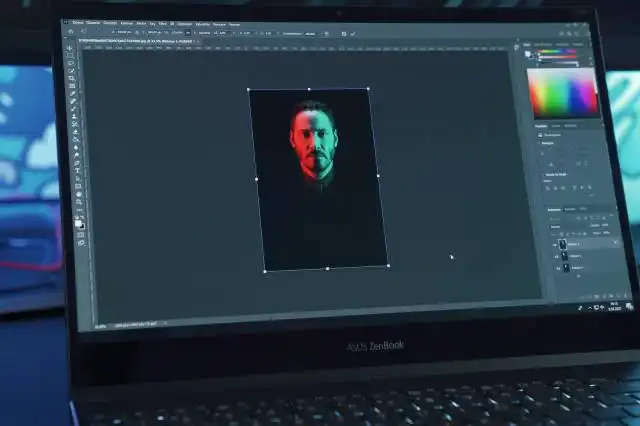Start a Photography Business
Frame the World Through Your Lens: Jumpstart Your Own Photography Business
| Updated


PHOTOGRAPHY BUSINESS
Capture the world one snap at a time with your very own photography business, painting emotion-laden pictures without the use of a brush! In this business, your aim would be to crystalize moments, events, or people with the click of a button, illuminating raw beauty hidden in plain sight. Perfect for all you shutterbugs with an eye for aesthetics and details, a photography business is where your creativity can literally click with your entrepreneurial spirit. Think about it, you could be the secret ingredient turning a wedding, a graduation, or even an ordinary day into a framed memory that outlasts time.
Jump to Business Plan
RELATED BUSINESS IDEAS
Browse ALL Arts & Crafts Business Ideas
Discover Your Perfect Domain
Unlock the door to your online success with our hand-picked selection of premium domain names. Whether you're starting a new venture or rebranding an existing one, the right domain can set the tone for your digital presence. Browse through our curated list, each with its unique potential to enhance your brand's visibility and credibility.
PHOTOGRAPHY MINI BUSINESS PLAN
This a quick reality check to help you identify the strengths and weaknesses of your business concept before you dive in.
Expected Percent Margin:
- Gross Margin: 70-80%
- Net Profit Margin: 15-25%
Earnings Expectations:
- Daily Earnings: Assuming 1-2 photoshoots per day, $100 - $500
- Weekly Earnings: $500 - $2,500
- Monthly Earnings: $2,000 - $10,000
- Annual Earnings: $24,000 - $120,000
Actions to Hit Those Numbers:
Equipment Setup:
- Initial Investment: Spend around $5,000 - $10,000 on professional-grade camera, lenses and lighting equipment.
- Software: Invest in editing software like Adobe Lightroom and Photoshop, approx $10/month.
Training and Development:
- Skill Enhancement: Regularly attend workshops, webinars, and training sessions to improve your photography and editing skills.
- Updating Equipment: Keep an eye on the evolution of photography equipment and software, upgrade when necessary.
Marketing and Customer Acquisition:
- Website and Portfolio: Create an attractive website showcasing your past work, develop an online portfolio on platforms like Instagram, LinkedIn.
- Networking: Attend events, collaborate with other photographers and professionals in the industry.
- Customer Referral Program: Encourage clients to refer you to their friends and family for a small discount on their next session.
Sales and Customer Retention:
- Customer Experience: Offer high quality service to ensure client satisfaction and repeat business.
- Pricing: Experiment with different pricing strategies – consider offering packages vs individual sessions.
Cost Control:
- Studio Rent (if applicable): If renting a studio, aim for total monthly studio costs to represent no more than 20% of monthly revenue.
- Insurance: Allocate resources for equipment and liability insurance.
Business Operations:
- Work Scheduling: Work at least 5 days a week, be flexible with working hours as clients may request shoots for weekends or holidays.
- Product Delivery: Ensure regular and timely delivery of processed images.
As before, these are generalized estimations and can vary greatly. They do not represent a guarantee of income or profitability. Always consult with a financial or business advisor for personalized advice.
NOT WHAT YOU HAD IN MIND? Here are more ideas



Browse ALL Arts & Crafts Business Ideas
Grab Your Business Website Name
Before you get caught up in the whirlwind of setting up your business, invest in a domain name. It's a small but significant step that lays the foundation for your brand and makes it easier for customers to find and trust you. Just like you wouldn't build a house without securing the land first, don't build a business without securing your domain name.
"Why? Can't that wait?" Here's why it shouldn't
Step 1: Determine if a Photography Business is Right for You
Breakdown of Startup Expenses
Before you decide to start a photography business, it is important to understand the financial costs associated with launching a business. Start-up expenses can include the cost of equipment, such as a camera, lenses, and lighting equipment, as well as software and other tools. You may also need to purchase business insurance and pay for a business license. Additionally, you may need to pay for a website or other marketing materials. It is important to research the costs associated with each of these items and create a budget to ensure you have enough money to cover the start-up costs.
Breakdown of Ongoing Expenses
Once you have started your photography business, there are ongoing expenses that you will need to consider. These expenses can include the cost of maintaining your equipment, such as replacing worn out parts or buying new lenses. You may also need to pay for marketing materials, such as business cards or flyers, and for advertising. Additionally, you may need to pay for web hosting or other online services. It is important to understand the ongoing costs associated with running a photography business and plan accordingly.
Step 2: Name Your Photography Business
When naming your business, it is important to think of something that is catchy and memorable. It should be something that will stand out and be easy to remember. Additionally, it should be something that reflects the type of photography you specialize in. For example, if you specialize in wedding photography, you may want to include the word “wedding” in your business name. You may also want to consider using a pun or play on words to make your business name more memorable.
It is also important to make sure that the name you choose is not already taken. You can do this by searching the internet and making sure that the domain name is available. Additionally, you should check with the local government to make sure that the name is not already registered with them. This will help to ensure that you are not infringing on any existing trademarks.
Finally, you should also consider registering your business name as a trademark. This will help to protect your business name and prevent others from using it. This will also help to ensure that your business name is unique and that no one else can use it.
Step 3: Create a Business Plan
Creating a business plan is a crucial step in starting a photography business. A business plan should include a mission statement, a description of the services offered, a market analysis, a list of competitors, a budget, a marketing strategy, and a timeline.
The mission statement should be a concise description of the purpose of the business and its goals. It should also include the values of the business and the target audience.
The description of services should include the types of photography services offered, such as wedding photography, portrait photography, commercial photography, and so on. It should also include the pricing structure, the types of equipment used, and any other services offered.
The market analysis should include an overview of the photography industry and the current trends. It should also include an analysis of the target market, such as the demographics, the geographic area, and the potential customers.
The list of competitors should include the names of other photography businesses in the area and their services. It should also include the pricing structure and any other advantages they may have.
The budget should include the startup costs, such as equipment, software, and marketing materials. It should also include the ongoing costs, such as rent, utilities, and insurance.
The marketing strategy should include the methods used to reach potential customers, such as social media, advertising, and word-of-mouth. It should also include the methods used to retain customers, such as offering discounts and loyalty programs.
Finally, the timeline should include the expected timeline for launching the business and reaching the goals. It should also include milestones, such as when the business will be profitable and when the goals will be achieved.
Step 4: Obtain the Necessary Licenses and Permits
In order to start a photography business, it is important to obtain the necessary licenses and permits. Depending on the type of business, the photographer may need to obtain a business license, a seller’s permit, a photography permit, and any other permits that may be required by the state or local government. It is important to research the specific requirements for the photographer’s state and locality in order to ensure that all necessary permits and licenses are obtained.
How to Obtain Licenses and Permits
Once the photographer has determined what licenses and permits are needed, the next step is to obtain them. This can be done by visiting the local government office or website and submitting the necessary paperwork. Additionally, the photographer may need to pay a fee in order to obtain the licenses and permits. It is important to note that the process for obtaining licenses and permits can vary from state to state, so it is important to research the specific requirements for the photographer’s state and locality.
Cost of Licenses and Permits
The cost of obtaining licenses and permits can vary depending on the type of business, the state or locality, and the number of permits and licenses required. Generally, the cost of obtaining licenses and permits can range from a few hundred dollars to a few thousand dollars. It is important to research the specific costs for the photographer’s state and locality in order to ensure that the necessary funds are available.
Benefits of Obtaining Licenses and Permits
Obtaining the necessary licenses and permits is important in order to ensure that the photography business is operating legally and is in compliance with all applicable laws. Additionally, obtaining the necessary licenses and permits can help to protect the photographer from potential legal issues in the future. Furthermore, having the necessary licenses and permits can help to legitimize the business and make it more attractive to potential customers.
Step 5: Find a Location
When looking for a location to start a photography business, it is important to consider the type of photography that will be done, the size of the space needed, and the cost of the space. It is also important to consider the location’s proximity to potential clients and the availability of parking and public transportation.
Home Office
For those who are just starting out, a home office may be the most cost-effective option. This will allow the photographer to save on overhead costs and will also provide a comfortable and private space to work. However, it is important to make sure that the home office is properly set up and meets all safety and legal requirements.
Studio Space
For those who are looking to expand their business, a studio space may be the best option. This will provide the photographer with a professional space to work and will also allow them to host clients. When looking for a studio space, it is important to consider the size of the space needed, the cost of the space, and the availability of parking and public transportation.
Other Options
In addition to a home office and a studio space, there are other options for photographers to consider. These include renting space in a shared studio, renting a space in a coworking space, or renting a space in a gallery. Each of these options has its own advantages and disadvantages and it is important to consider all of them before making a decision.
Step 6: Purchase Equipment
When starting a photography business, there are certain pieces of equipment that are necessary. This includes a digital camera, lenses, flash, and tripod. Additionally, you will need a computer and editing software. You may also want to invest in a printer and photo paper. Depending on the type of photography you plan to do, you may need additional equipment such as lighting, backdrops, and props.
Where to Buy Equipment
When purchasing equipment, it is important to shop around and compare prices. You may be able to find used equipment at a discounted price. Additionally, you can purchase new equipment from a variety of online retailers. When shopping online, be sure to read customer reviews to ensure you are getting a quality product. You may also be able to find deals on equipment from local camera stores.
Financing Options
If you are unable to purchase the equipment outright, there are financing options available. Many camera stores offer financing plans that allow you to make monthly payments. Additionally, you may be able to apply for a loan from a bank or credit union. Be sure to compare interest rates and terms to ensure you are getting the best deal.
Insurance
Once you have purchased the equipment, it is important to insure it. This will protect you in the event of theft, damage, or loss. You can purchase insurance from a variety of companies. Be sure to read the policy carefully to ensure you are getting the coverage you need.
Step 7: Market Your Business
It is important to get the word out about your photography business. There are many ways to do this, including creating a website, joining local business associations, and attending networking events. You can also create a presence on social media platforms, such as Instagram, Twitter, and Facebook. You can also create a portfolio of your work and distribute it to potential clients. Additionally, you can create promotional materials, such as business cards, flyers, and brochures, to distribute in your local area.
Tips for Effective Marketing
It is important to create a marketing plan that outlines your goals and strategies. You should also research your target market and create a strategy that is tailored to them. Additionally, you should focus on creating quality content that will engage your audience and draw them in. You should also consider utilizing digital marketing tools, such as SEO, to reach more potential customers. Finally, it is important to track your progress and measure the success of your marketing efforts.
Step 8: Set Prices
When setting prices for your photography business, it is important to consider the cost of your time, the cost of your equipment, and the cost of any additional services you may offer. It is also important to consider the market rate for photography services in your area. One way to set prices is to charge a flat rate for each service you offer. This rate should be based on the cost of your time and equipment, as well as the market rate for photography services in your area. Another way to set prices is to charge an hourly rate for your services. This rate should be based on the cost of your time and equipment, as well as the market rate for photography services in your area. Additionally, you may want to offer discounts for larger projects or for repeat customers.
Tips for Setting Prices
When setting prices for your photography business, it is important to make sure that your prices are competitive with other photographers in your area. It is also important to make sure that your prices are fair and reflect the quality of your work. Additionally, it is important to make sure that your prices are clear and easy to understand. You should also make sure that you are charging enough to cover your costs and make a profit. Finally, it is important to make sure that your prices are consistent and that you are not undercutting yourself.
Step 9: Make Money
Making money as a photographer can be done in a variety of ways. Some of the most popular ways include selling prints, offering photography services, and selling stock photos. Selling prints is a great way to make money as a photographer, as it allows you to showcase your work and make a profit from it. Offering photography services is another great way to make money, as you can charge for your time and expertise. Finally, selling stock photos is a great way to make money as a photographer, as you can license your photos to companies and individuals for a fee.
Tips for Making Money
When it comes to making money as a photographer, it’s important to have a plan in place. You should create a pricing structure for your services, and make sure to research the competition to ensure you’re offering competitive rates. Additionally, it’s important to create a portfolio of your work to showcase to potential clients. Finally, it’s important to network and market your services to ensure you’re reaching the right people.
EXPLORE MORE CATEGORIES
Browse ALL Business Idea Categories
TAKE THE NEXT STEPS










